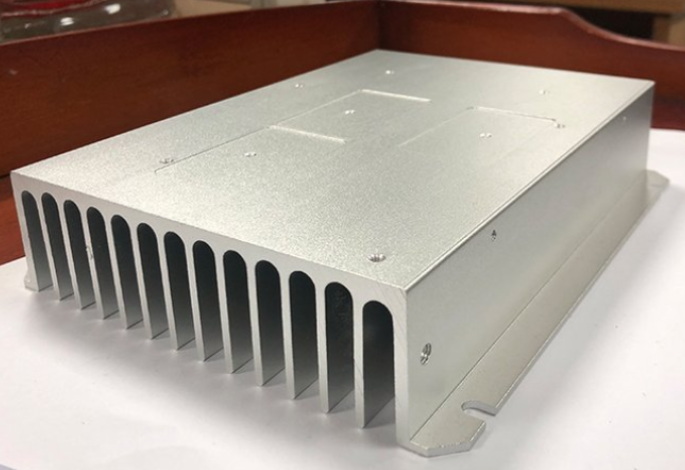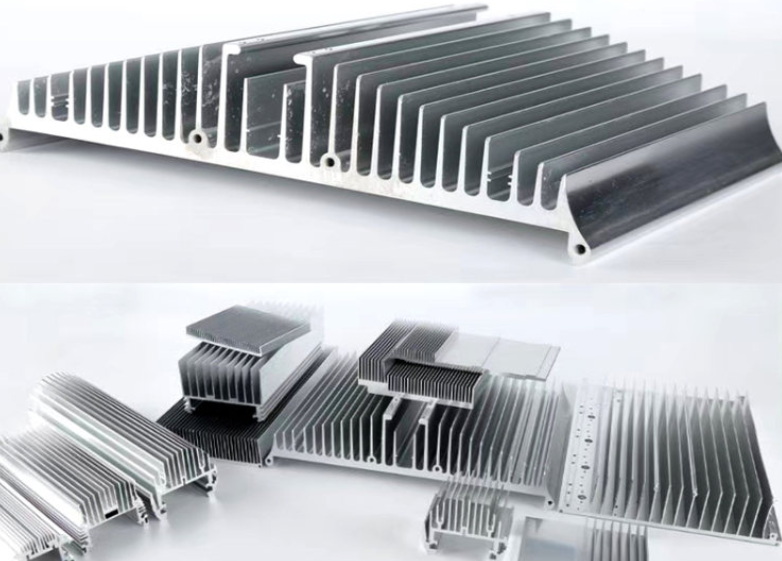Content Menu
● Introduction to Aluminum Heat Sinks
>> Benefits of Aluminum Heat Sinks
>> Applications of Aluminum Heat Sinks
● Importance of Aluminum Heat Sinks on Extruder Housing
>> How Aluminum Heat Sinks Work on Extruder Housing
>> Design Considerations for Aluminum Heat Sinks on Extruder Housing
● Customization and Manufacturing Process
● Conclusion
● FAQ
>> 1. What are the primary benefits of using aluminum heat sinks on extruder housing?
>> 2. How do aluminum heat sinks enhance thermal management in extruder housing?
>> 3. What materials are commonly used for aluminum heat sinks?
>> 4. Can aluminum heat sinks be customized for specific extruder housing designs?
>> 5. What surface treatments are used to enhance the durability of aluminum heat sinks?
● Citations:
In the realm of 3D printing and manufacturing, maintaining optimal temperatures is crucial for the performance and longevity of equipment. One critical component in achieving this thermal balance is the use of aluminum heat sinks on extruder housing. These heat sinks play a pivotal role in dissipating heat generated by the extruder, ensuring that it operates within safe temperature ranges. This article will delve into the importance of aluminum heat sinks in extruder housing, their benefits, and how they contribute to efficient thermal management.

Introduction to Aluminum Heat Sinks
Aluminum heat sinks are widely used in various applications due to their excellent thermal conductivity, lightweight nature, and cost-effectiveness. The process of creating these heat sinks involves extruding aluminum through a die to form complex profiles with fins, which significantly enhance heat dissipation by increasing the surface area exposed to air.
Benefits of Aluminum Heat Sinks
1. Thermal Conductivity: Aluminum offers superior thermal conductivity compared to many other materials, allowing for efficient heat transfer from the heat source to the surrounding environment.
2. Lightweight and Versatile: Aluminum heat sinks are lightweight, making them ideal for applications where weight is a concern. They can be customized in shape and size to optimize thermal performance based on specific device requirements.
3. Cost-Effective: Compared to materials like copper, aluminum is more cost-effective for manufacturing heat sinks. The extrusion process reduces material waste and allows for efficient production, making it an economical choice.
4. Design Flexibility: The extrusion process enables the creation of heat sinks with intricate fin structures, allowing for customized designs tailored to specific applications.
Applications of Aluminum Heat Sinks
Aluminum heat sinks are used in a variety of industries, including electronics, automotive, LED lighting, and aerospace. Their versatility and effectiveness have led to widespread adoption across numerous electronic devices.
Importance of Aluminum Heat Sinks on Extruder Housing
In the context of 3D printing, the extruder is a critical component responsible for melting and depositing plastic filament. However, this process generates significant heat, which can lead to overheating and damage to the extruder if not managed properly. Aluminum heat sinks on extruder housing serve as a crucial solution to this problem by efficiently dissipating heat away from the extruder.
How Aluminum Heat Sinks Work on Extruder Housing
1. Heat Dissipation: The fins on the aluminum heat sink increase the surface area exposed to air, facilitating better airflow and enhancing heat dissipation. This ensures that the extruder operates at a stable temperature, preventing overheating.
2. Thermal Stability: By maintaining a consistent temperature, aluminum heat sinks help ensure that the extruder functions optimally, leading to improved print quality and reduced risk of mechanical failure.
3. Longevity: Efficient heat dissipation extends the lifespan of the extruder by reducing thermal stress on its components.

Design Considerations for Aluminum Heat Sinks on Extruder Housing
When designing aluminum heat sinks for extruder housing, several factors must be considered:
- Fin Design: The design of the fins is crucial for maximizing heat dissipation. Straight, pin, or flared fin configurations can be used depending on the specific requirements of the extruder.
- Material Selection: Aluminum alloys such as Al 6061 or Al 6063 are commonly used due to their high thermal conductivity and machinability.
- Surface Treatment: Anodizing or powder coating can enhance corrosion resistance and improve the aesthetic appeal of the heat sink.
Customization and Manufacturing Process
The aluminum extrusion process allows for high design flexibility, enabling the creation of custom heat sink solutions tailored to specific extruder housing designs. This involves:
1. Design Phase: Engineers create detailed drawings of the desired heat sink profile, considering factors such as fin spacing and surface area.
2. Tooling: A die is created based on the design specifications. This die is used to extrude the aluminum into the desired shape.
3. Extrusion: The aluminum billet is heated and pushed through the die to form the heat sink profile.
4. Post-processing: The extruded heat sink may undergo additional machining, such as cutting or drilling, to meet precise specifications.
Conclusion
In conclusion, aluminum heat sinks on extruder housing are essential for maintaining optimal thermal conditions during 3D printing operations. Their ability to efficiently dissipate heat ensures that the extruder operates within safe temperature ranges, enhancing print quality and extending the lifespan of the equipment. The customization and cost-effectiveness of aluminum heat sinks make them a preferred choice for thermal management in various applications.

FAQ
1. What are the primary benefits of using aluminum heat sinks on extruder housing?
- The primary benefits include efficient heat dissipation, thermal stability, and extended equipment lifespan. Aluminum heat sinks are also lightweight and cost-effective.
2. How do aluminum heat sinks enhance thermal management in extruder housing?
- Aluminum heat sinks enhance thermal management by increasing the surface area exposed to air, which improves airflow and heat dissipation. This ensures that the extruder operates at a stable temperature.
3. What materials are commonly used for aluminum heat sinks?
- Commonly used materials include aluminum alloys such as Al 6061 and Al 6063 due to their high thermal conductivity and machinability.
4. Can aluminum heat sinks be customized for specific extruder housing designs?
- Yes, aluminum heat sinks can be customized through the extrusion process, allowing for tailored designs that meet specific thermal management needs.
5. What surface treatments are used to enhance the durability of aluminum heat sinks?
- Surface treatments such as anodizing or powder coating are used to enhance corrosion resistance and improve the aesthetic appeal of aluminum heat sinks.
Citations:
[1] https://brtextrusions.com/heat-sink-applications-of-aluminum-extrusions-cooling-solutions-for-electronic-devices/
[2] https://www.linkedin.com/pulse/benefits-using-aluminum-extruded-heat-sink-solutions-eason-sjhm-3iroc
[3] https://www.kenfatech.com/extrusion-process/
[4] https://www.heatsinkusa.com
[5] https://www.youtube.com/watch?v=GHWE_ZA6HZ8
[6] https://kimsen.vn/-mastering-machining:-unveiling-the-ultimate-guide-to-aluminum-heat-sink-profiles--ne141.html
[7] https://www.wellste.com/what-is-an-extruded-heat-sink-2/
[8] https://www.kingkatech.com/aluminum-extrusion-heat-sink-kingka.html
[9] https://www.renxin-precision.com/blogs-detail/-40
[10] https://proleantech.com/advantages-of-aluminium-extruded-heat-sink-solutions-in-modern-electronics/
[11] https://pioneerthermal.com/the-complete-guide-to-aluminum-heat-sink-extrusion-benefits-uses/
[12] https://www.linkedin.com/pulse/right-manufacturing-solution-aluminum-heat-sink-yee-creatingway-
[13] https://www.ennergroup.com/products-category/extrusion-heat-sinks.html
[14] https://www.renxin-precision.com/blogs-detail/--41
[15] https://ionthis.com/the-complete-guide-to-heat-sinks/
[16] https://www.chaluminium.com/why-are-aluminum-heat-sinks-better-than-other-materials-heat-sinks






















